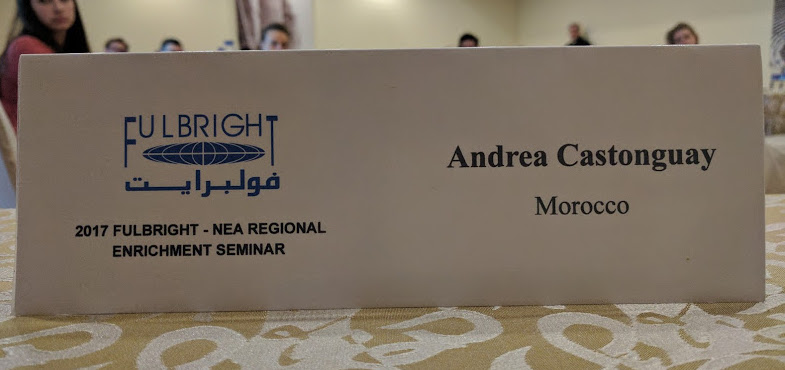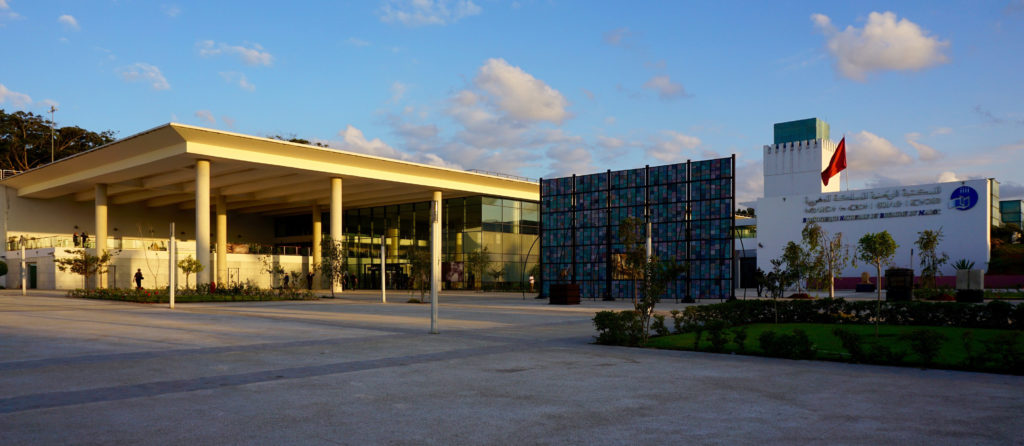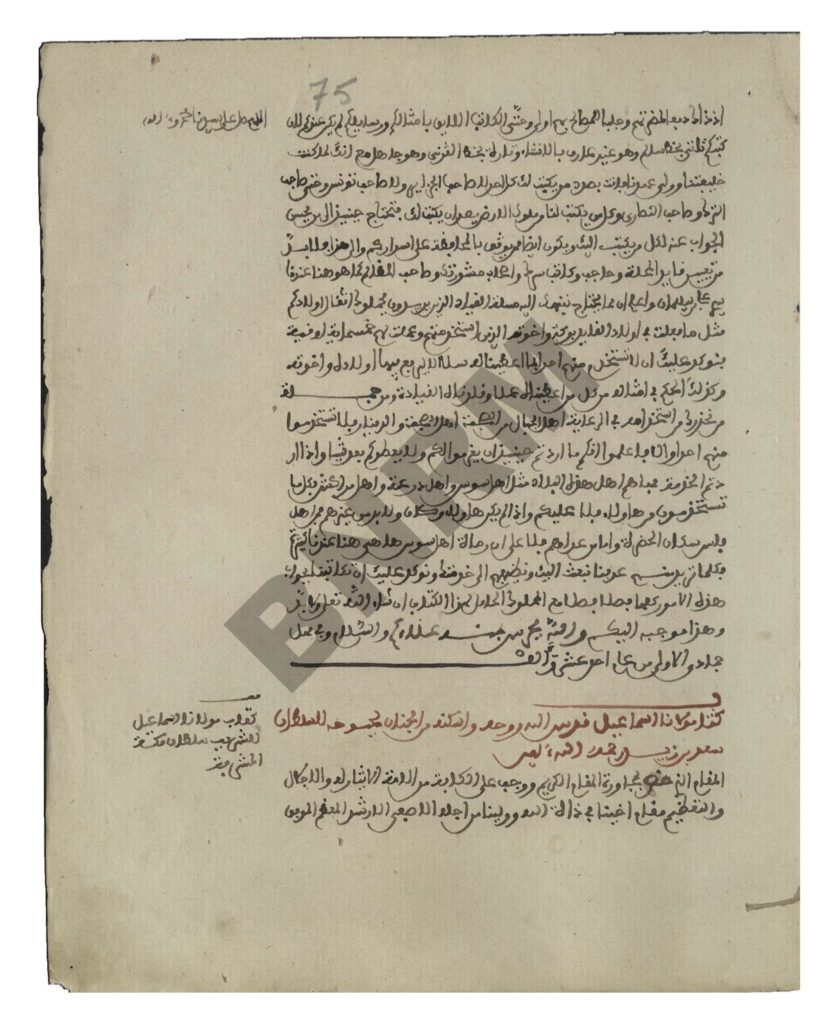
This past week, I and a number of my Fulbright colleagues here in Morocco traveled to Amman, Jordan in order to participate in a regional Fulbright conference.
Over three days, Fulbright researchers from Israel and Palestine, Jordan, and Morocco presented a snapshot of our current in-country research, discussed the various issues and challenges we faced along the way with the regional, cultural, and linguistic differences between our respective host countries, and got to know one another over numerous cups of coffee. We not only came from all across the United States, but we also came from just about all the different academic and professional disciplines: social work, medicine, sociology, art history, literature, economics, political science, education, and medieval history. In short, we were living up to the stated mission of the Fulbright Program: to foster international exchange in order to increase mutual understanding and diminish the threat of conflict based upon an inability to see the world as interconnected.
While the architects of the Fulbright Program imagined this exchange happening at an international level in order to lessen conflict and promote peace, it also works on a domestic level. By offering the grant to those in the sciences and in the humanities, Fulbright illustrates the fundamentally interdisciplinary nature of our world and how much we rely upon the expertise of each other in their respective fields order to proceed with our own research. The following sketches are but a few examples of the ways in which each of us Fulbrighters depend upon one another and our various subjects of expertise in order to complete our own projects.
- One of the Jordan-based grantees is looking at the various hurdles faced by entrepreneurs and small-business owners in Jordan and in Palestine, including the time it takes to register a business, the types of documentation required, the amount of capital needed at the start, and the laws governing ownership. It turns out that for Palestine, one needs an expert in the Ottoman legal code, the Mecelle, in order to start a business in 2017. Not only does this mean that potential entrepreneurs need translations of the Mecelle from Ottoman Turkish to modern Turkish (which also involves a shift from an Arabic alphabet to a Latin one), Modern Standard Arabic, or English for consultation, but they also need historians and legal scholars to explain how the code functions, what its restrictions are, and its various historical precedents. This particular Fulbright researcher needs articles summarizing all of this in order to gain a deeper understanding of the various hurdles their colleagues face and proceed with their own research. In short: to study current business practices in Palestine, someone with a financial or business background has to rely upon the work of historians, lawyers and legal scholars, and translators.
- On a similar note, one of the Morocco-based grantees who is studying divorce proceedings in Morocco needs to rely upon the work of theologians in addition to historians, lawyers and legal scholars in to order to understand divorce proceedings in Morocco and conduct their research. Although much of Moroccan law is based on French civil law —which in turn requires them to depend upon the work of experts in French legal history— the family code is based upon Islamic religious law (Shari’a law). However, the foundation for Morocco’s family code (as well as its name) comes from the Mudawwana, a 9th century book of juridical opinion based upon the legal writings of 8th and 9th century scholars and written in Classical Arabic. It is also a code that is unique to the Maliki school of Sunni Islam, a school that has its origins in the Arabian peninsula rather than North Africa. Like all legal codes and religious texts, the Mudawwana also has numerous compendiums and guides for its interpretation and implementation. Thus, this particular Fulbrighter needs medieval historians (such as myself) to explain how the code came to Morocco and gained favor among the jurists during the Middle Ages, modern historians to explain the creation of a mixed civil and religious code during the Protectorate and post-colonial periods, linguists to help translate and explain Classical Arabic terms in Modern Standard Arabic and in French (the language of civil law in Morocco), and legal scholars to interpret the laws themselves and explain how they influence current rulings on divorce.
Such an illumination of intellectual interdependence needed to answer contemporary questions could not come at a more dire and drastic time. The release of the the 2018 Fiscal Budget, with its draconian cuts to both the Sciences and the Humanities along with programs and initiatives designed for the public good such as the State Department (which runs Fulbright), is predicated on the idea that grants such as Fulbright and fostering intellectual and geographical exchange among grantees is not a priority. The proposed elimination of the National Endowment for the Humanities is a sign from the US Government — the same institution that created the Fulbright Program in 1946—that the government (and by extension, its citizens) have no role in funding the study of humanity itself. Wrapped up in all of this is the idea that “academics,” especially those in the Humanities, are not “useful” for anyone outside of their narrow specialty, and that funds should be allocated to those fields which promote business and long-term employment.
Yet these ideas did not begin at the federal level, nor did they begin with this Administration. The shift away from fostering intellectual exploration, research, and an interdisciplinary framework began at the state and local level as a way to resolve budget crises (often not brought about by education spending), and it has been pushed by many in higher-ed including College and University boards and deans. As colleges and universities continue to push the idea that their graduates are “successful” and that such success is only measured by the imagined direct causation of undergraduate degree and major to one’s income across their lifetime, they re-write their curriculum requirements to discourage interdisciplinary study among the majority of their students. Cutting or eliminating requirements to take a number of classes outside of one’s concentration while allowing SATII or AP courses to “count” for college credit means that our students will not be prepared to engage in intellectual exchange, much less have the tools necessary to turn to other fields and experts in order to answer their own questions.
Toting the equation of “undergraduate specialty = personal wealth” and “interdisciplinary study ≠ “gainful employment” (an argument that does not hold much water) undercuts the very support needed to answer legal and economic questions posed by these two Fulbright researchers. If there are no specialists in Ottoman law, medieval history, legal codes, and Islam — to say nothing of language teachers and translators required to make these documents available to your average Anglophone who does not speak or read Classical Arabic, Modern Standard Arabic, Ottoman Turkish, or French—then it is impossible for these projects to move forward. Yet in order to have specialists, you must have an education system that allows them to study the materials they need without telling them directly or indirectly that their choices are “economically precarious” and hold “little to no weight in ‘the real world.’” You also need a civil society that promotes intellectual exchange, that underwrites programs dedicated to interdisciplinary study, and says that spending a (very very very small ) portion of taxes on such programs is necessary in order to create forums of intellectual exchange that lead to international understanding and peace.
The skeptic always asks “What’s the worst that could happen?” when faced with a narrative. The answer in this case, I believe, lies within Jordan. As part of the conference, we were treated to presentations by development experts about the various challenges within the kingdom today. One of the most acute revolves around education and the lack of a robust civil society. In Jordan, any degree other than one in engineering, medicine, or law is viewed as socially and economically worthless, because there are no jobs other than laborer or service work and because jobs themselves are not determined by aptitude or interest but by your high school exit exam scores, which then determine your university education and subsequent career path. As a result, Jordanians themselves must depend upon the knowledge, insight, and vast amounts of money and trained foreigners in order to run their own country, understand their past, and answer basic questions.
Unlike Jordan, there is no other country who can underwrite the educational failings of the United States.
The world is interdisciplinary by default. Trying to understand our present relies upon the study of the past and the necessary experts to guide and shape that study. Institutions such as liberal arts colleges dedicated to a broad education for all of their students (not just humanities majors), intellectual centers such as the Medieval Institute, and government programs like Fulbright not only recognize this inherent interdependence but point to it as the avenue in which additional interdependence can be and needs to be fostered in order to increase mutual understanding. To insist upon the opposite against all evidence to the contrary and to do so by forcing our students into strict, narrow categories would raise generations against the very grain of their human nature and their environment and leave us utterly unprepared to see the world as it truly is.


